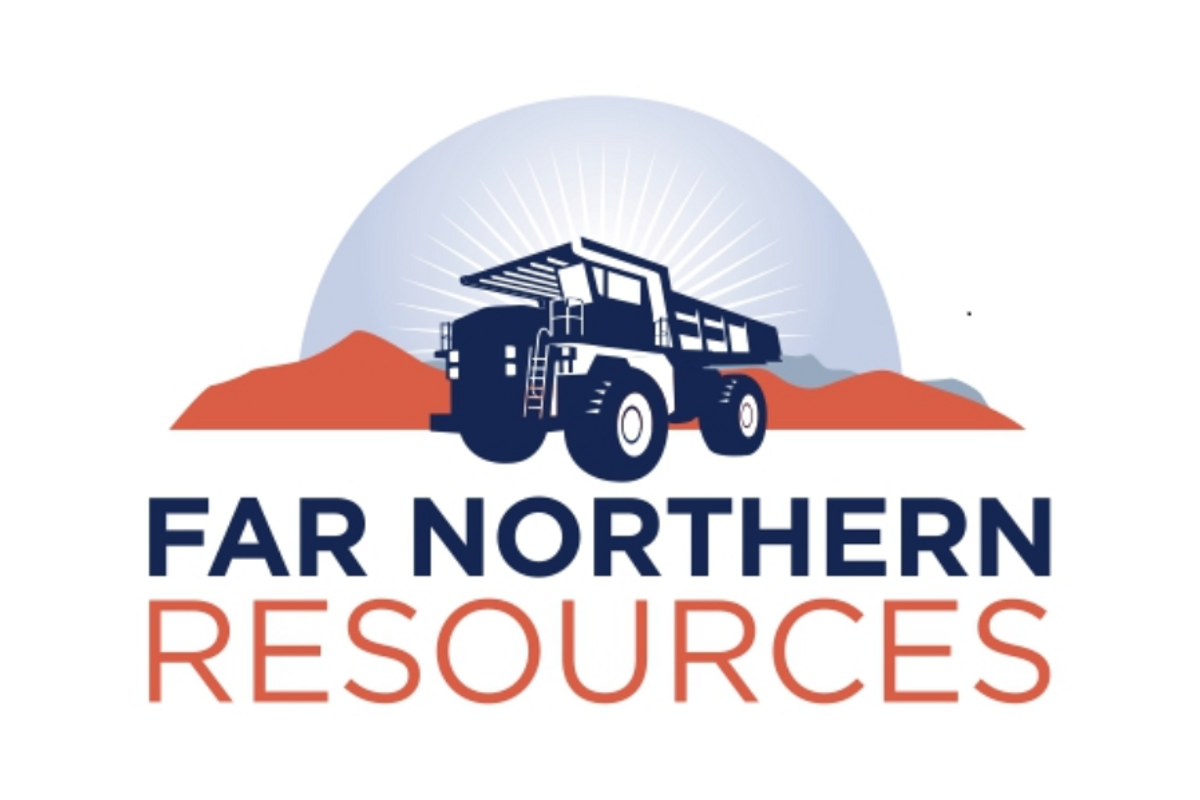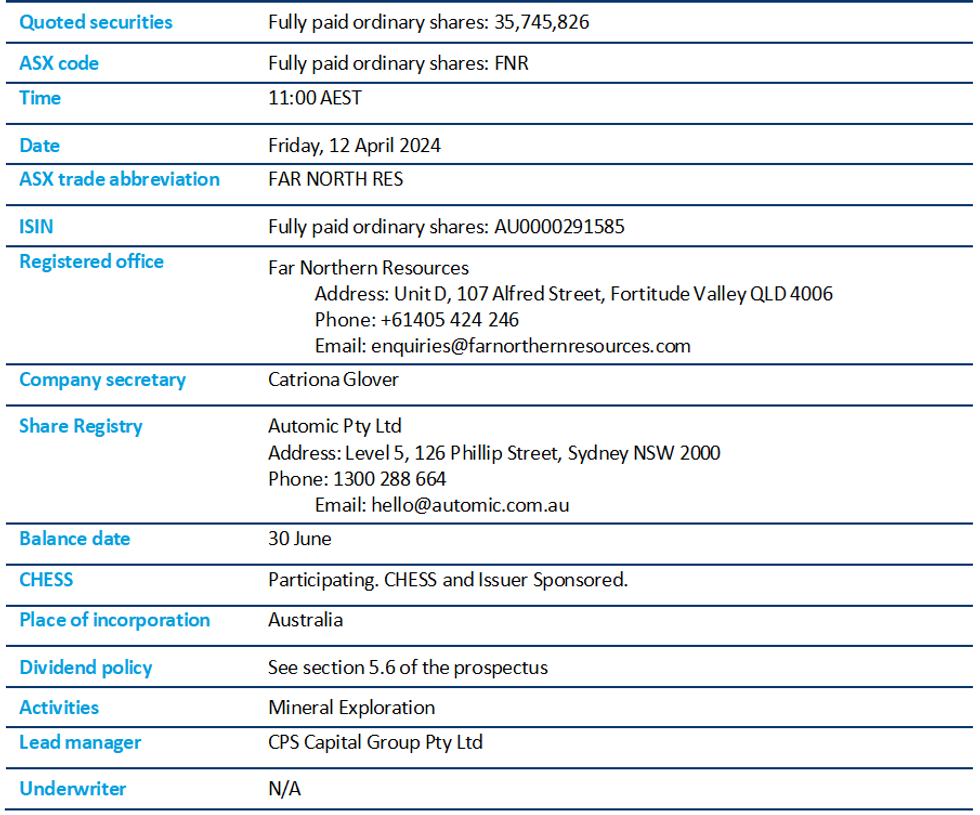
April 09, 2024
Description
Far Northern Resources Limited (‘FNR’) was admitted to the Official List of ASX on Wednesday, 10 April 2024. The securities of FNR will commence quotation at 11:00 AEST on Friday, 12 April 2024.
FNR raised $4,165,000 pursuant to the offer under its prospectus dated 24 July 2023, as supplemented by the supplementary prospectus dated 19 October 2023 and the second supplementary prospectus dated 19 January 2024, by the issue of 20,825,000 shares at an issue price of $0.20 per share.
Quotation information
What do I need to do and by when?
For further information, please refer to FNR’s prospectus, as supplemented by the supplementary prospectus and the second supplementary prospectus.
Need more information?
For further information, please call Automic Pty Ltd on 1300 288 664 within Australia and +61 (2) 9698 5414 from outside Australia.
Disclaimer
Please refer to the following disclaimer.
Issued by
ASX Compliance
Click here for the full ASX Release
This article includes content from Far Northern Resources, licensed for the purpose of publishing on Investing News Australia. This article does not constitute financial product advice. It is your responsibility to perform proper due diligence before acting upon any information provided here. Please refer to our full disclaimer here.
The Conversation (0)
05 January
Nine Mile Metals Announces Private Placement of up to $4 Million
Nine Mile Metals Ltd. (CSE: NINE,OTC:VMSXF) (OTC Pink: VMSXF) (FSE: KQ9) ("Nine Mile" or the "Company") is pleased to announce a private placement of up to 21,052,632 units (the "Units") at a price of $0.19 per Unit for aggregate gross proceeds of up to $4,000,000 (the "Offering").Each Unit is... Keep Reading...
31 December 2025
Surge in Copper Demand Re-energises Cobar Basin’s Underexplored Resource Potential
The Cobar Basin in Central New South Wales, Australia, may be emerging as a key focus for investors positioning for the next wave of copper supply. With a looming global shortage of the red metal and long-term demand being driven by electrification and decarbonisation, savvy investors are... Keep Reading...
29 December 2025
Nine Mile Metals Announces Certified High-Grade Assay Results up to 15.00% Copper from the Wedge Project, Bathurst, New Brunswick
Nine Mile Metals LTD. (CSE: NINE,OTC:VMSXF) (OTC Pink: VMSXF) (FSE: KQ9) (the "Company" or "Nine Mile") is pleased to announce Certified Assay results for volcanogenic massive sulphide (VMS) mineralization collected from the pre-drill area on the Wedge VMS Project, in the world-famous Bathurst... Keep Reading...
22 December 2025
Nine Mile Metals Announces Completion of DDH WD-25-02B and Continues to Confirm Zones of Copper Rich VMS with 66 Meters of Mineralization at the Wedge Project
Nine Mile Metals LTD. (CSE: NINE,OTC:VMSXF) (OTC Pink: VMSXF) (FSE: KQ9) (the "Company" or "Nine Mile") is pleased to announce that the 3rd drill hole in its Wedge Western Extension Drill Program (DDH-WD-25-02B) has been completed.DDH WD-25-02B was collared approximately 60 meters northwest of... Keep Reading...
Latest News
Interactive Chart
Latest Press Releases
Related News
TOP STOCKS
American Battery4.030.24
Aion Therapeutic0.10-0.01
Cybin Corp2.140.00





